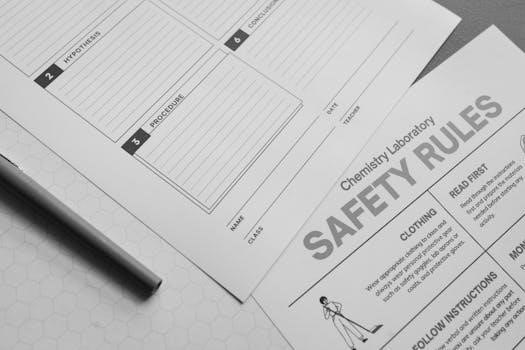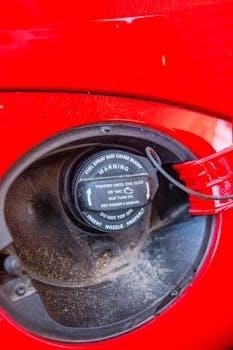Boss ME-70 Instruction Manual Overview
This section provides a general understanding of the Boss ME-70 multi-effects unit. The manual is designed for guitarists of all levels, from beginners to professionals, offering easy to understand guidance. It’s a comprehensive guide for users looking to explore and fully utilize their device.
Getting Started with Your ME-70
To begin using your Boss ME-70, first ensure you have a suitable power source, a BOSS PSA-120S AC adaptor is recommended for optimal performance. Next, connect your guitar to the designated GUITAR INPUT on the ME-70. It’s important to start with the unit in MANUAL MODE, this allows you to operate the device like a series of individual stompboxes. Make sure all effects are initially turned off, this will provide a clean base tone to begin with. Familiarize yourself with the physical layout, noting the function of each knob and button. You should take some time to explore each section. The ME-70 is designed for intuitive use, similar to using individual analog effects pedals. The manual will provide more in-depth details, but the main idea is to understand the basic signal path through the ME-70 before diving deeper.
Powering and Connecting the ME-70
To power the Boss ME-70, use the recommended BOSS PSA-120S AC adapter, ensuring the correct voltage and polarity to prevent damage. Alternatively, the unit can be powered by six AA batteries, providing portability. Connect your guitar using a standard 1/4-inch instrument cable into the GUITAR INPUT jack located on the ME-70. For output, connect another 1/4-inch cable from the ME-70’s OUTPUT jack to your amplifier or other audio equipment. It is important to double-check all connections for secure contact. Incorrect connections may result in poor sound quality or no signal; Using the correct cables will ensure optimal signal flow. Before powering on, make sure the volume on your amp is low to prevent any unexpected loud sounds. Always follow the manufacturer’s guidelines for safety when connecting the unit.
Understanding Manual and Memory Modes
The Boss ME-70 features two primary operating modes⁚ Manual and Memory. In Manual mode, the ME-70 functions like a traditional stompbox pedalboard. The current settings of the physical knobs on the device directly control the effects parameters, allowing for real-time adjustments. In contrast, Memory mode allows you to store and recall preset sounds. These presets can be personalized with your preferred effect combinations and settings. To switch between Manual and Memory modes, press the mode switch. When in manual mode, the dot at the bottom will light up, and when in Memory mode, the dot will be off. It is essential to familiarize yourself with both modes. Manual is ideal for on-the-fly tweaks, while Memory is best for quickly accessing your saved tones during performance. Understanding these modes is crucial for effectively using the ME-70.

ME-70 Effects and Controls
This section explores the ME-70’s various effects and their corresponding controls. It includes details on navigating the effects sections, preamp modeling, and adjusting OD/DS, modulation and delay effects.
Navigating the Effects Sections
The Boss ME-70 features a user-friendly interface with dedicated knobs for each parameter, making it easy to navigate the various effects sections. The effects are grouped into modules, similar to an analog synth, with four main groups each having a corresponding footswitch. In manual mode, these footswitches act like individual stomp boxes, allowing users to turn each effect on or off. The sections include COMP/FX, OD/DS, Modulation, and Delay. Each section has its own set of controls, enabling precise adjustments to the effect parameters. The ME-70’s intuitive layout allows guitarists to quickly access and tweak their desired sounds. This design makes experimenting with different tones and effect combinations straightforward, appealing to both beginners and seasoned professionals.
Preamp Modeling in the ME-70
The ME-70 features COSM preamp modeling, derived from the GT-10 and Legend series pedals, offering a variety of amp types. These models include CLEAN, COMBO, TWEED, STACK, and LEAD STACK, providing a wide range of tonal options. The preamp section allows users to emulate classic amp sounds, from clean and crisp to heavily distorted tones. This section is designed to give the user a realistic amp sound through the ME-70. This modeling technology allows guitarists to achieve various amp tones without needing multiple physical amplifiers. The preamp section is controlled through dedicated knobs on the interface, enabling users to easily adjust parameters. The preamp models are an important part of the ME-70’s versatile sound palette, allowing for broad sonic experimentation.
Adjusting OD/DS, Modulation and Delay effects
The ME-70 provides dedicated knobs for adjusting Overdrive/Distortion (OD/DS), Modulation, and Delay effects. These controls enable users to tweak parameters for each effect section, making it easy to create custom sounds. The OD/DS section offers a range of distortion types, adjustable with its corresponding knobs. The Modulation section allows for various effects like chorus, phaser, and flanger, with controls for rate and depth. The Delay section provides settings for delay time, feedback, and level. The ME-70’s intuitive interface simplifies the process of dialing in desired effects, making it easy to experiment. Each section can be independently engaged or disengaged, offering flexibility in sound design. These adjustments are key to shaping the sound, allowing for a wide range of tonal possibilities.

Advanced Features and Usage
This section explores the ME-70’s deeper functions, such as using tap tempo for modulation and delay, saving personalized presets, and utilizing the EZ Tone feature for quick sound creation.
Using Tap Tempo with Modulation and Delay
The Boss ME-70 offers a tap tempo function, allowing you to synchronize modulation and delay effects with the tempo of your music. To use tap tempo, repeatedly press the pedal corresponding to the modulation or delay effect you wish to control. The ME-70 will detect the rhythm of your taps and adjust the effect’s speed accordingly. This feature enables you to create seamless transitions and maintain a consistent rhythm throughout your performance. Using tap tempo is especially useful for live performances, where you can dynamically adjust effects in sync with the band. This ensures that your modulation and delay effects enhance, rather than clash with, the overall musicality of your sound, making it a versatile tool for any guitarist.

Saving and Loading Presets
The Boss ME-70 allows you to save custom effect settings as presets for easy recall. To save a preset, first adjust the desired effect parameters in manual mode. Then, press and hold the desired memory location pedal, and the ME-70 will save your settings to that location. To load a saved preset, simply select the corresponding memory location using the appropriate pedal. This feature is especially useful for live performances, enabling you to quickly switch between different tones. Saving and loading presets allows for a more streamlined and efficient performance setup. This means you can move between songs with ease, and also ensures that your favorite sounds are always ready at your fingertips, increasing the performance flexibility.
The EZ Tone Feature
The EZ Tone feature on the Boss ME-70 simplifies the process of creating and editing sounds. It provides an intuitive way for beginners to quickly dial in a desired tone without needing in-depth knowledge of each individual effect parameter. This user-friendly function allows you to select a sound category, then adjust the tone using a single knob. The EZ Tone feature automatically adjusts several effect parameters simultaneously, making it easy to experiment and find the right tone for your music. This feature is great for those new to multi-effects units and it also provides a quick way to achieve a desired sound without having to spend a lot of time tweaking individual settings. This saves you time, allowing you to focus on playing.

Troubleshooting and Support
This section offers guidance for resolving issues with your Boss ME-70. It also provides information on accessing further support, such as the owner’s manual and service documents, ensuring smooth operation of the device.
Accessing the Owner’s Manual and Training Guide
The Boss ME-70’s owner’s manual and training guide are essential resources for users seeking in-depth knowledge of the unit’s features and capabilities. These documents, available as free PDF downloads, provide comprehensive instructions, ensuring users can effectively navigate and utilize the ME-70’s various functions. The owner’s manual offers detailed explanations of all parameters, settings, and modes, while the training guide provides practical exercises and tips to enhance the user’s understanding. These resources are designed to be user-friendly, catering to both novice and experienced guitarists. Accessing these guides is crucial for getting the most out of the ME-70, allowing musicians to fully explore its potential and create their unique sounds. Furthermore, these materials offer troubleshooting tips and solutions, which are valuable for maintaining the device’s functionality and addressing any issues that may arise. These documents can be found on the official Boss website, ensuring users have quick and easy access to the necessary information.
Boss ME-70 Service Manual
The Boss ME-70 service manual is a specialized document intended for experienced technicians and repair professionals. Unlike the owner’s manual and training guide, the service manual delves into the intricate details of the ME-70’s internal components and circuitry. It includes detailed schematics, parts lists, and troubleshooting procedures, enabling technicians to diagnose and repair any hardware issues that may arise. This manual is not designed for general users, as it requires a strong understanding of electronics and repair techniques. The service manual is essential for addressing complex malfunctions and ensuring the device operates correctly. Access to this manual is typically restricted to authorized service centers and qualified repair technicians. It’s a critical resource for maintaining the longevity and proper functioning of the ME-70, allowing for detailed diagnostics and repair processes. The service manual can be found in ZIP format, on specialized technical websites, providing the necessary tools for hardware maintenance and repair. It is a key component for ensuring the device’s continued performance.